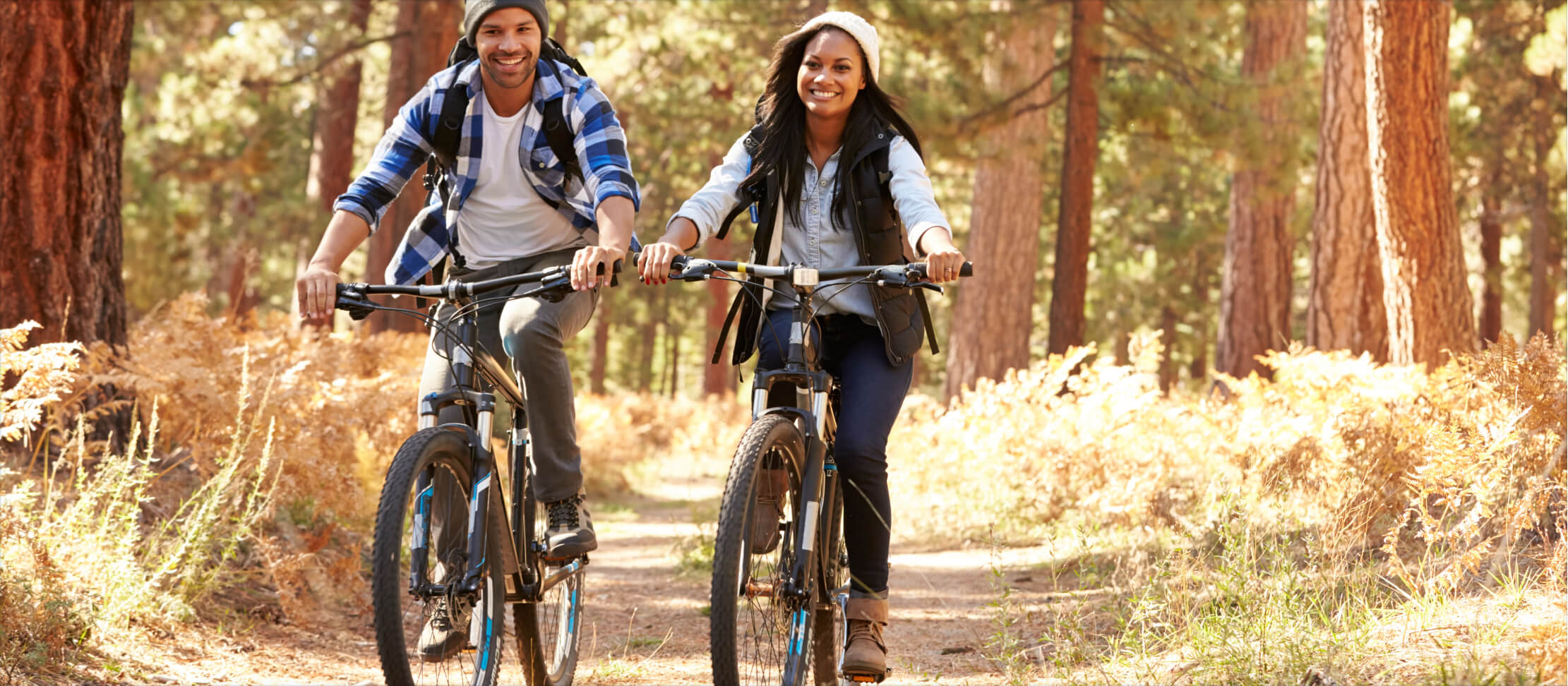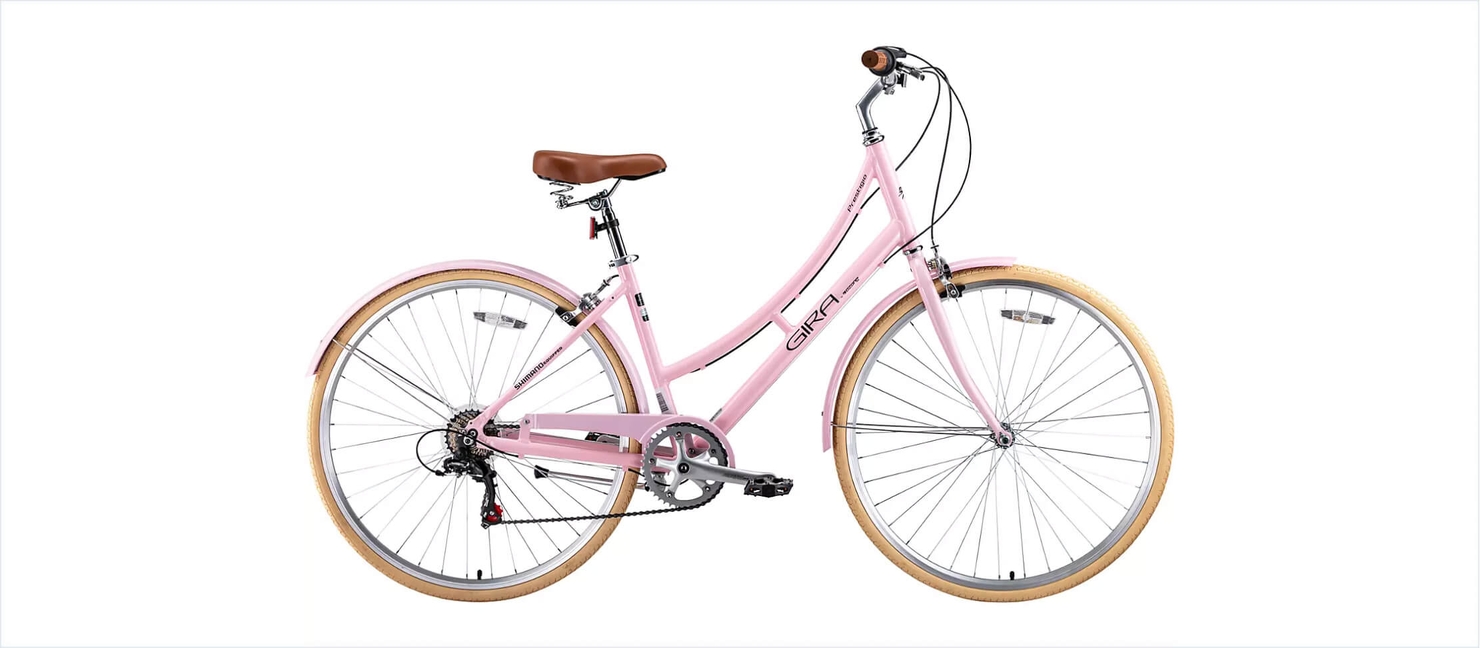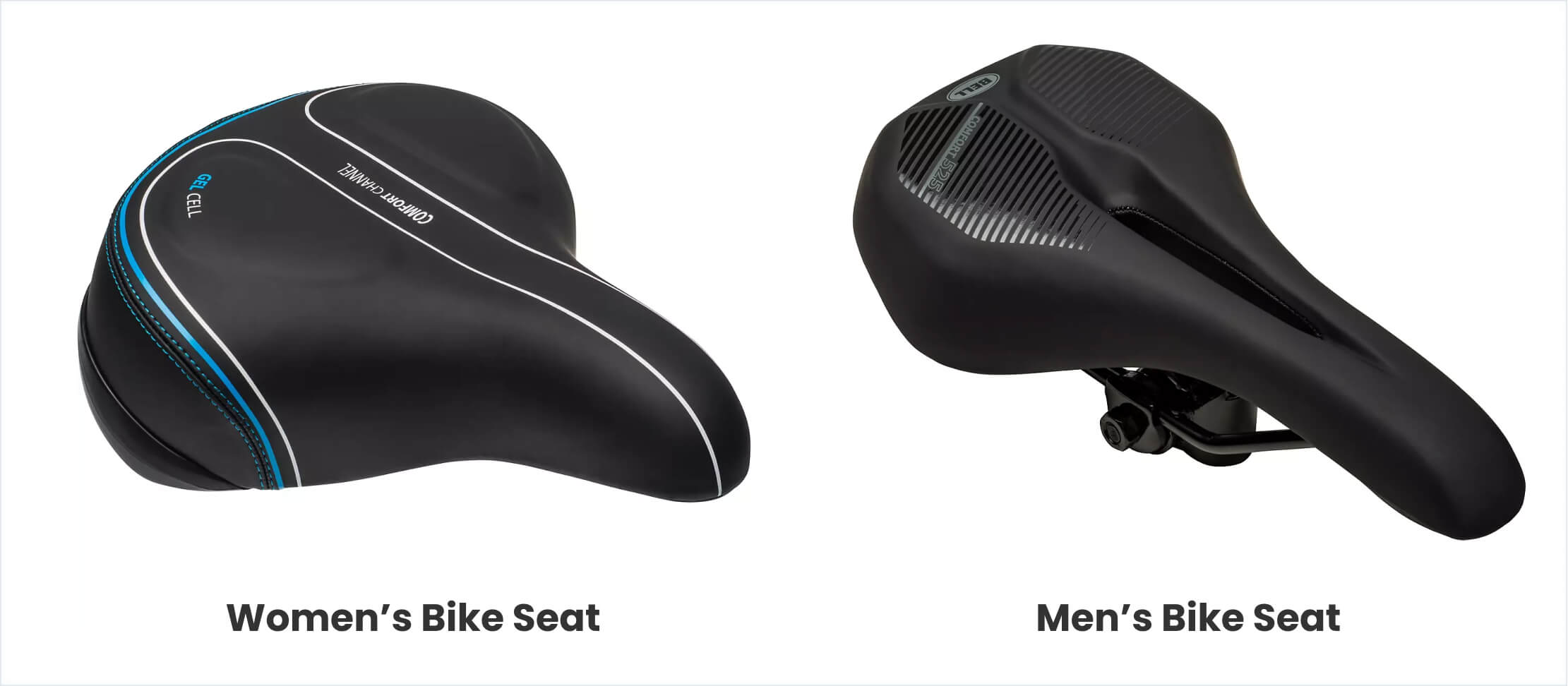Men’s vs Women’s Bikes: What’s the Difference?

Ever wondered what the differences between men’s vs women’s bikes are? The answer may surprise you!
In our complete guide, you’ll learn all about the different historical and modern nuances between men's bikes and women's bikes. Specifically, we cover how they’re engineered, who each bike benefits most, and what you should consider before you buy.
Key Takeaways
-
Learn the difference between men’s vs women’s bikes from their seats, handlebars, gears, and everything in between!
-
Review bike considerations based on body types for lighter, heavier, taller, and shorter riders and our general guidelines for each.
-
Find out whether women can use men’s bikes and vice versa.
What’s the Difference Between Men’s vs Women’s Bikes?
Traditional men's and women's bikes are different in size and shape. A man's bike usually has a high bar from the handle to the seat, while a woman's bike typically has a lower bar, making it easier to step over.
| Men’s vs Women’s Bikes Breakdown | |||||
|---|---|---|---|---|---|
| Feature | Men’s Bikes | Women’s Bikes | |||
| Bike Shape/Size | Typically available in larger sizes for taller riders | Generally available in smaller sizes for shorter riders | |||
| Frame Shape | Longer top tube, more aggressive riding position, suitable for longer torsos and arms | Shorter top tube, more upright riding position, caters to shorter torsos and arms | |||
| Saddle/Seat Design | Narrower and longer nose, designed for the male anatomy | Wider, shorter nose, extra padding, tailored for female anatomy | |||
| Handlebars/Stem | Wider handlebars and longer stem for broader shoulders and longer reach | Narrower handlebars and shorter stem for narrower shoulders and shorter reach | |||
| Suspension Setup | Tuned for heavier riders, with more focus on stability and control | Tuned for lighter riders, emphasis on comfort and performance | |||
| Component Differences | Larger brake levers, shifters, and longer crank arms, designed for larger hands and legs | Smaller brake levers, shifters, shorter crank arms, accommodating smaller hands and legs | |||
| Gearing | May have higher gear ratios for faster speeds and more aggressive riding | May have lower gear ratios for easier climbing and accommodating female riders' strength | |||
Bike Shape/Size
-
Women's bikes are smaller in size with some models available for riders as short as 4'10". Meanwhile, some men's bike models only accommodate riders at a 5 feet height or taller.
-
Women's bikes have shorter stack heights and reach lengths — so they’re more comfortable for riders with shorter torsos and arms.
-
A woman’s bike saddle tends to be wider than a man’s bike due to pelvic bone structure, too.
Frame Shape
You’re bound to see clear visual differences in men's vs women’s bike frames — specifically the step-over vs step-through frames. Traditionally, bikes have been suited for a specific gender. However, gender distinction is outdated or irrelevant to riders who prefer comfort or specific performance these days.
Step-Through Bikes

- Historically seen as ‘ladies' bicycles’ to accommodate skirts or dresses
- Feature a low or no 'top tube’, easing mounting and dismounting
- Popular among riders of all genders
- Useful for riders who frequently stop and start during journeys
- Ideal for senior riders, cyclists with physical limitations, or those wearing restrictive clothing
Step-Over Bikes

- Historically associated with ‘men's bicycles’
- Feature a high, usually horizontal 'top tube'
- Require a leg swing to mount or dismount
- The higher top tube can add structural rigidity
- Ideal for bike riders who seek or prefer performance over convenience
Saddle/Seat Design
One of the main differences between men's and women's bikes is the seat. You can always switch seats out on a bike you like. Ultimately, it comes down to personal preference and what feels comfortable on long journeys. Test out any seat before you buy it.
-
Women’s Seats: Women's bike seats are usually wider and shorter to accommodate riders with wider hips and pelvic bones. Some women's seats even have a long hole down the center to reduce pressure.
-
Men’s Seats: Men's seats are typically longer and narrower than women's, but there’s no rule against which seat you must use. However, men’s seats may only be comfortable for shorter distances.

Handlebars/Stem
The handlebars and stem (the component that connects the handlebar to the fork steerer tube) significantly impact your riding position and how close/far you feel from the handlebars.
Women's Bikes
- Women’s Handlebars: Women's bikes have narrow handlebars that are raised to put riders in a more upright riding position. This accommodates riders with narrow shoulders.
- Women’s Stems: Women's bikes have shorter stems than men's bikes, making it easier to feel closer to the handlebars and maintain an upright riding position.
Men's Bikes
- Men’s Handlebars: Men's handlebars have wider grips set apart to accommodate a strong grip for sharp turns. Wider handlebars are designed for wider shoulders.
- Men’s Stems: Men's bikes typically have longer stems for a more stretched-out riding position. These bikes typically cater to riders with longer arms.

Suspension Setup
Suspension impacts your control and helps your bike to maintain traction and speed. It affects your overall comfort, especially on uneven terrain.
Women’s Bike Suspension

- Women’s bikes typically have suspension tuned for lighter-weight riders.
- Less suspension means more responsive suspension systems compared to men's bikes.
Men’s Bike Suspension

- Men’s bikes usually have suspension that’s tuned for riders with heavier weights.
- More suspension means the bike is able to absorb the impact of bumps on rough terrain.
Bike Component Differences
Women’s Bike Components
- Smaller Brake Levers and Shifters: Designed for smaller hands for easier handling.
- Shorter Crank Arms: Suits shorter leg length for comfortable cycling.
Men’s Bike Components
- Larger Brake Levers and Shifters: Designed for larger hands for better control.
- Longer Crank Arms: Suits longer leg length for efficient pedaling.

Women’s vs Men’s Bike Gearing
The gearing you require for your rides depends on what terrain and elevation you'll likely encounter. Men's and women's bikes are equipped with different gear setups that cater to the traditional riding strengths of each gender:
Women’s Bike Gearing
- Women's bikes typically have smaller gears since, on average, they’re designed for shorter riders.
- Smaller gears come in handy when you tackle hills since they make it easier to pedal and conquer those inclines with less effort.
Men’s Bike Gearing
- Men's bikes (being designed for riders with typically more leg strength) often feature larger gears.
- These larger gears allow for higher speeds — offering riders the chance to unleash their power and cover more ground with each pedal stroke.

Bike Considerations Based on Body Types
No matter which bike type you have or buy, always pay special attention to your general body type. Adjustments may be necessary before you pedal away into your next adventure.
| Body Type Bike Considerations Guide | |||||
|---|---|---|---|---|---|
| Rider Type | Stem | Seat | Handlebar | Suspension | Brake Levers |
| Lighter Riders | Shorter stem for reduced flex | Contoured seat with minimal padding | Narrower width for optimal control | Softer spring rates and lighter damping | Reach-adjustable levers for smaller hands |
| Heavier Riders | Rigid, longer stem for stability | Reinforced seat for added support | Wider width for better leverage | Stiffer spring rates and heavier damping | Larger levers for improved grip |
| Taller Riders | Raised, extended stem for reach | High seat post for leg extension | Wider handlebars for long arms | Increased travel and tailored sag for height | Longer levers for larger hands |
| Shorter Riders | Compact stem for easy reach | Low seat post for mounting ease | Narrower handlebars for short arms | Reduced travel and tailored sag for shorter riders | Smaller, short-reach levers |
Can Women Use Men’s Bikes?
Yes! Women can use men's bikes (and vice versa). The most important thing is that a bike fits the rider well and is comfortable to ride — regardless of the gender it's designed for.
While men's and women's bikes are typically designed to accommodate differences in height and torso length, these may not apply to every rider. You can always buy one type of bike and make adjustments as you need to.
Expert Tip:
Don’t let how a bike is marketed determine which bike you purchase. So long as a bike feels good and suits your riding style, it’s right for you!
Have Fun Out There!
Ready to feel the wind in your hair? Our selection of bikes — be it men’s bikes or women’s bikes — will provide you with the perfect ride for hours of endless adventure.
Get ready to soak up the sunshine, breathe in the fresh air, and explore breathtaking views on your brand-new bike. It's time to pedal into unforgettable memories this summer!
 Gift Cards
Gift Cards Hot Deals
Hot Deals Big Fun Deals
Big Fun Deals Clearance
Clearance

